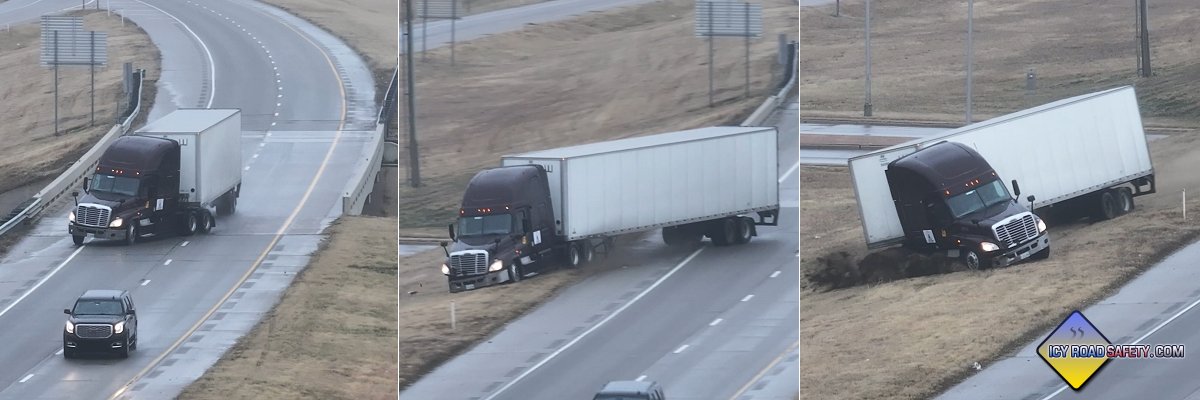Icy Bridges: Taking Drivers by Surprise
"Bridge Freezes Before Road". Those signs you see ARE true! One of the most dangerous types of road icing threats comes from bridges and overpasses. A bridge is exposed to air on all of its surfaces - on top, underneath and on its sides. By contrast, a normal road surface is only exposed to air on one side, its top surface. When temperatures drop, this means bridges will cool and accumulate snow and ice faster than roadways on solid ground (watch the animation above).

An icy bridge's most dangerous threat is their element of suprise - they catch drivers off guard, who are traveling at full speed because the rest of the roads are either clear or just a little wet. The consequences of driving onto ice at highway speeds can be catastrophic, as the loss of control and impacts happen are much mre severe than in most other conditions. Slides are often unrecoverable and chain-reaction type accidents are common, as additional vehicles will often lose control in the exact same location.
Notice the bridges in the photo gallery - completely covered with a layer of very slick snow and ice, even though the roads before the bridges are totally clear. The transition from clear road to icy takes place in mere inches!

Icy bridge in Bloomsdale, Missouri

Icy bridge in Kanawha County, West Virginia

Icy bridge in Evergreen, Alabama

Icy bridge in Beckley, West Virginia

Icy bridge road surface condition transition zone

Icy bridges in Birmingham, Alabama
Black ice from freezing rain - an "Invisible Danger"
Freezing rain, and its close relative freezing drizzle, produces the most dangerous type of bridge icing out of any other type of winter precipitation. Not only is the icing treacherously slick, it is invisible. Unlike ice associated with snowfall, ice from freezing rain looks exactly like the wet roads adjacent to it.


Semi jackknife on freezing rain-iced bridge in Kansas
Can you see the ice on this bridge?

Navigating Icy Bridges
- Expect any bridge you encounter to be icy during wintry precipitation (snow, sleet, freezing rain, freezing drizzle).
- If you see an icy bridge ahead, slow down as much as you can do so safely before reaching the bridge (don't slam on your brakes) and coast across the bridge. While on the ice, don't brake, accelerate or steer.
- Avoid high-speed roads with bridges during winter weather.
- It's always best to avoid driving on icy bridges if you can. Even if you avoid an accident yourself, highways are frequently shut down due to accidents.
Icy bridge loss-of-control variants
Loss-of-control on icy bridges can take two different forms. In the case of longer bridges, the entire loss-of-control sequence frequently takes place on the ice. Shorter bridges typically result in loss-of-control occuring once the vehicle comes off of the bridge onto dry (or wet) pavement, where tire grip is regained suddenly with the vehicle's tires pointing in any direction but straight ahead. WIth shorter bridges, the vehicle will be rapidly diverted in whatever direction the front wheels are pointed when they regain grip, off of the road into the ditch or into a guardrail or jersey barrier.

Short icy bridges cause loss of control when the tires suddenly regain grip when leaving the ice.
Video: Icy Bridges
Educational Winter Driving Videos - Watch for Free:
  
Home | Risk | Stats | Accident Video | Icy Bridges | Tips | Warning Signs | If You Slide | If You Wreck
1,836
Average annual
deaths in the US
from icy roads
136,309
Average annual
injuries in the US
from icy roads
[ More Statistics ]
|
|

